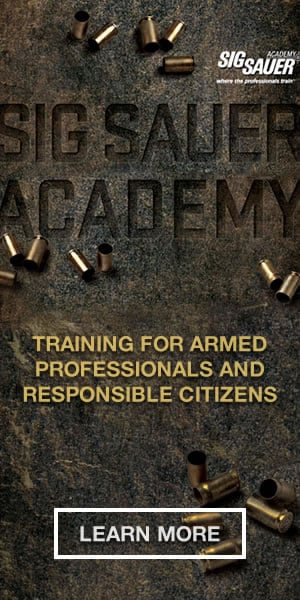There is no doubt that the Taser is the number one "go-to" self-defense/arrest and control device in use by law enforcement officer's today. Whether used as a self-defense tool to fend off a criminal attack, or to bring a highly resistive suspect into compliance with officer commands, the Taser shines due to its effectiveness combined with minimal risk of any long term harm to the person that it's used on. It helps fill the gap between the need and justification for the use of a firearm and the use of something less. Check out this link for a situation where a Taser may have been a better choice:
"Florida City Commissioner Shoots and Kills alleged shoplifter, surveillance video shows"
Taser (whose name is an acronym for T-homas A S-wift's E-lectric R-ifle which was the name of a novel written in 1911) has been available to both law enforcement and civilian users for almost as long as the devices have been available. Recently, I was able to obtain and test one of the newest of Taser's civilian defense devices-the Taser Pulse.
The Taser is an electronic Conducted Energy Weapon or CEW. It operates by delivering a 50,000 volt electrical current into the person or animal it is deployed against. It does this by firing two metal "probes" or darts from a cartridge in the front of it. These darts deliver their energy to the target through two lightweight conducting wires. The darts have a harpoon-like prong on the end that imbed into the flesh of the person that is shot with it. The current that is conducted down the wires from the Taser will meet between the imbedded probes.
If that sounds painful, it is. Proper Taser contact with the probes achieves "Neuromuscular Incapacitation" or NMI. This means that no matter how hard the brain tries-even if you can think clearly-the electrical impulses are basically blocked by the "Taser effect". If you are shot with one in the back or legs, and you think "run" -you can't. Your leg muscles simply won't respond as long as the Taser is running and contact is maintained. The Taser can be also be used as a contact stun device after the cartridge has been fired or before it is put in place.
Taser currently makes three civilian self-defense devices; the Bolt, Pulse, and Strikelight. The Strikelight is an excellent flashlight/contact stun device, while the Bolt and Pulse primarily operate through the firing of the probes mentioned above-just like their law enforcement counterparts.
The Pulse and Bolt however, operate with a different philosophy and design than the law enforcement models. The LE versions such as the X-26P-the version you are most likely to see on police duty belts-delivers five seconds of energy per trigger pull. The officer maintains control of the X-26P as part of the function of arresting and subduing the suspect. If a person becomes resistive again, another five seconds of energy can be delivered.
The Pulse and Bolt operate on the principle of escaping (from the attacker) rather than subduing. Because of the differing needs of cop (control and arrest) vs. civilians (get away) the Pulse and Bolt run for 30 seconds once the trigger is pulled. Once the Taser takes effect, the civilian user is to then place the Taser (while running) carefully on the ground and get away from the suspect. Taser will replace the civilian Taser free of charge if the Taser is taken from the scene and the event has been documented and investigated by police. That's quite a warranty! By the way, I took the five second Taser ride when I got certified as a Taser instructor in 2005. It was agonizing-for five seconds. I shudder to think of what 30 seconds of exposure would be like!
The Taser Bolt (formerly the C2) is shaped much like the very first Taser's. It is curved and has more of the appearance of a science fiction ray gun. It has no trigger per se, and instead uses a sliding switch cover that once pulled back energizes the Taser. Pushing the button below the switch cover fires the Pulse.
The Taser Bolt, the newest civilian Taser, is shaped like a small handgun, and has the size and feel of a modern compact 9mm's-but is much lighter.
All Taser's run off disposable lithium power cells to generate their power. The Strikelight is the exception as it is a rechargeable device. The lithium batteries are replaceable, and will last for years as long as you aren't constantly firing it.
The Pulse, like the X-26P, is operated by an ambidextrous safety switch mounted in a position that would be on the slide of a handgun. Those of you who are familiar with the slide mounted safeties on the Beretta 92 series, the Walther PPK or the Bersa Thunder series of pistols will feel right at home with the Pulse safety switch.
To power up the Pulse simply rotate the switch up with either the right or left thumb. I would recommend getting familiar with its operation before putting the actual Taser cartridge in place. If you accidentally pull the trigger, the worst that will happen is that the spark will arc across the front contacts and no probes will be fired.
When the power switch is activated two other things happen. First, a green LED indicator at the rear of the Pulse will light up to show that it's active. The second thing that happens is that the LED used for illumination and the laser used for aiming will activate. The laser dot shows where the top dart of the over/under Taser cartridge will strike. The Pulse has a set of fixed pistol sights for use in bright daylight conditions.
The Pulse and the Bolt have a maximum operational distance of 15 feet. The advantage of the Taser probe system is that it gives you the opportunity to stop a threat before physical contact is made. Firing the Taser into an opponent at 15 feet will likely mean that the probes will be at the "end of their rope" and not imbed. 10 feet is about the ideal distance for effective probe deployment.
The 23 page Owner's manual is not included with the Pulse, or other civilian Taser's. They are available for downloading online. They are a MUST to read and fully understand before you flip the safety switch for the first time. It will give you a better idea than I can in this limited space of all aspects of the use of the Pulse.
The Pulse is packaged with two cartridges-one to test fire (which is a must) and one to load into the Taser for carry. Replacement cartridges are available. A target is included as is a safe-carry pouch. The Taser is legal to carry in Ohio-but not aboard airplanes. It can be transported in check-on luggage, however you need to know if it's legal in destinations you travel to as some leftist controlled cities prohibit its use.


